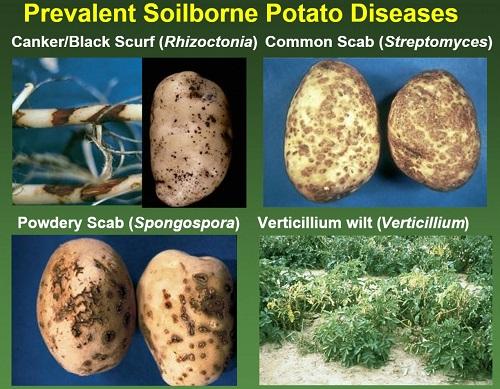
Credit: Robert Larkin
Crop rotation is vital to any crop production system. Rotating crops maintains crop productivity and soil health by replenishing organic matter, nutrients, soil structure, and other properties while also improving water management and reducing erosion. Rotating crops also reduces the buildup of soilborne pathogens and diseases.
When implementing a crop rotation system, growers should consider crop type, rotation length, and crop sequence. In the webcast “Crop Rotation and Soil Health in Potato Production Systems,” Robert Larkin summarizes the results of years-long crop management strategy studies conducted on potato fields in Maine to determine the most effective management practices.
Crop rotation moderates soilborne diseases in multiple ways. It breaks the host-pathogen cycle by replacing the host plant with another nonhost plant, and it stimulates microbial activity, diversity, and beneficial soil organisms. Crop rotation also directly inhibits pathogens by stimulating microorganisms that are antagonistic to pathogens or introduce inhibitory compounds produced by the plant itself.
For potato, specifically, Larkin recommends a 3-year rotation (or longer) with conservation tillage. Growers should grow a disease-suppressive crop, such as a Brassica crop or Sundangrass, prior to potato and a cover crop, such as winter rye or ryegrass, following the rotation crop. He also recommends using a compost amendment to improve organic matter, soil properties, water availability, and yield.
###
To learn more about Larkin’s research, watch the 18-minute webcast, which is part of the Focus on Potato series on the Plant Management Network (PMN). PMN is a cooperative, not-for-profit resource for the applied agricultural and horticultural sciences. Together with more than 80 partners, which include land-grant universities, scientific societies, and agribusinesses, PMN publishes quality, applied, and science-based information for practitioners.
Media Contact
Ashley Bergman Carlin
[email protected]
651-994-3832




